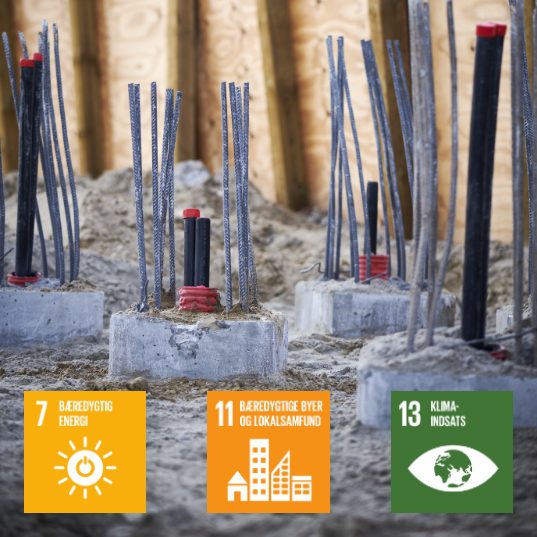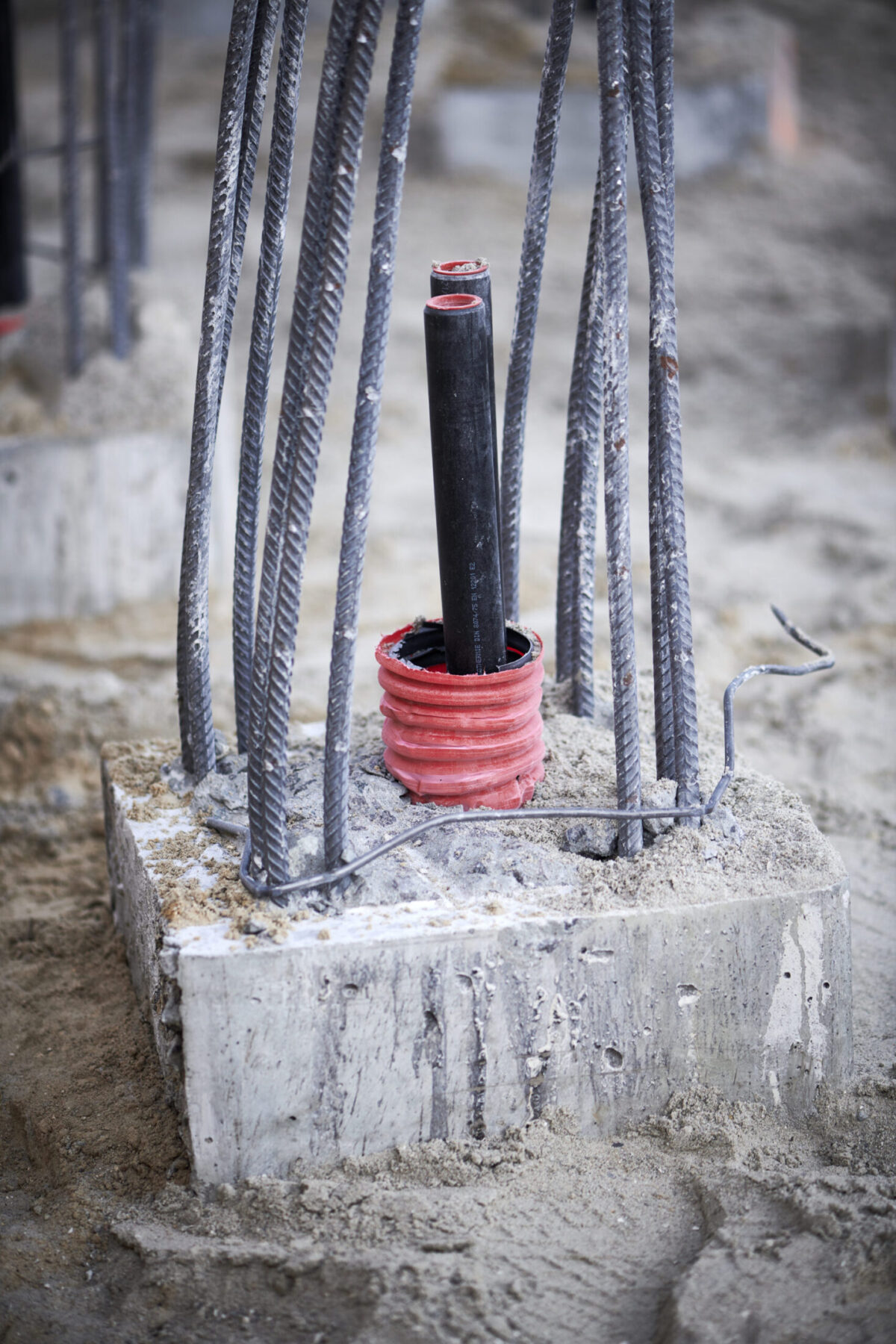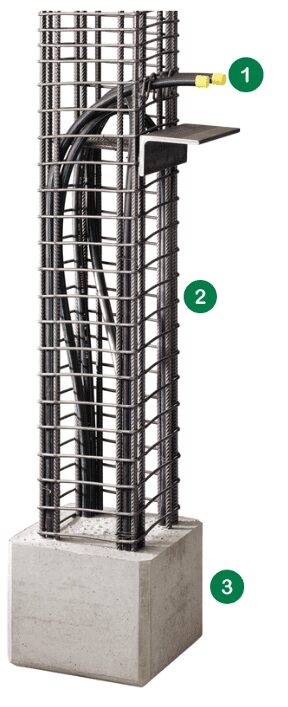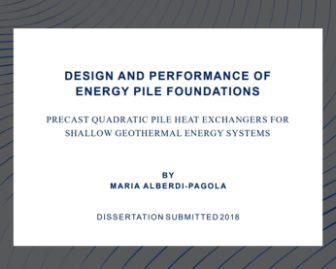
Products
Energy Piles
Energy Piles use the earth’s natural resources
By using the earth’s energy to heat and cool the building, the only potential climate impact when operating Energy Piles is the electricity consumed when operating a heat pump.
In Denmark, an ever-increasing amount of our electricity comes from wind energy. When the electricity that drives the heat pump comes from wind, and the ground heat in the upper layers comes from the sun, the energy poles are therefore a 100% sustainable solution that recycles the earth’s resources without burdening the climate.
You can actually say that Energy Piles equals double sustainability because they both support the building but also support the environment through gentle energy extraction.
Read more down below

The science behind Energy Piles
Energy Piles use the heat found in the upper layers of the soil, approximately 7-18 meters down.
Here, the temperature is stable at around 8-10 degrees, all year round, because the sun heats the upper layers of the soil.

In the summer
By circulating the cool liquid from the Energy Piles in the building, excess heat is extracted from it and stored in the ground, keeping the ground at a balanced temperature.
Soil temperatures of 8-10 °C ensure an EER* of 20-30 with the right setup and dimensioning.
*ERR: Energy Efficiency Ratio; describes the efficiency of a cooling system.
An ERR of 20=1 kWh of electricity results in 20 kWh of total energy input.
In the winter
In winter, the stored energy in the ground will be used to heat the building in cooperation with a heat pump.
Soil temperatures of 810 ° C ensure a COP ** of 3.5-6 with the right setup and dimensioning.
**COP: Coefficient of Performance; describes the efficiency of a heating system.
A COP of 6 = 1 kWh of electricity results in 6 kWh of total energy output

Precast Energy Piles
Centrum Pæle can produce an Energy Pile that, with the help of geothermal technology, helps to utilize the earth’s resources efficiently.
The Energy Pile is a traditional prefabricated concrete pile with cast-in ground heating pipes, in which the circulation of liquid absorbs or releases energy to the ground. The building’s foundation supports the building but also functions as a cooling and heating supply.
This means sustainability in a double sense for buildings that use Energy Piles, as the pile will also deliver energy produced in a sustainable way in addition to the static load-bearing capacity.
The Energy Pile can thus replace or reduce the need for both traditional heating and cooling and contributes to CO2-neutral construction.
Energy Piles are produced in lengths of 7-18 meters and thus contribute between 12-34 meters of ground heating pipes per pile but in contrast to the traditional horizontal solution, where the ground heating pipes are dug approx. 1.5. meters below the ground surface, the ground heat from the Energy Piles is retrieved vertically through the soil layers between a depth of 1 meter and down to a depth of 18 meters, where the temperature is stable all year round between approx. 8-10 degrees C.
Centrum Pæle can assist with Energy Pile projects from start to finish and can design a good, balanced solution in relation to how many Energy Piles the individual building need to support its energy consumption. In addition, Centrum Pæle collaborates with skilled heat pump and plumbing specialists who can be included in the projects to design the right solution from the start.


How is the Energy Pile made?
1. Embedded in the cage are PE100 pipes, which are used to circulate the fluid that carries the energy from the ground into the building and vice versa. These are tied into the reinforcing mesh in the Energy Piles. The pipes are assembled with electro welding, which ensures welding of high and uniform quality. This ensures a 100% air and watertight connection.
2. The reinforcing mesh is similar to that found in ordinary prefabricated piles and contains between 6 and 20 vertical reinforcing bars, tied and welded together with hanger wire.
3. The reinforcing mesh and PE pipes are covered and cast in a layer of concrete, which ensures that the Energy Pile is strong enough to support the building. The concrete layer also protects the PE pipes and ensures that they are never at risk of breaking.
